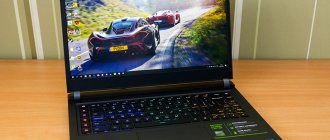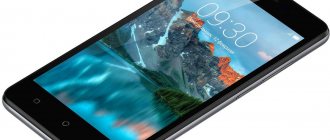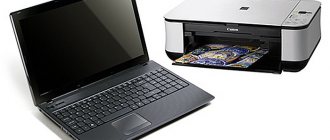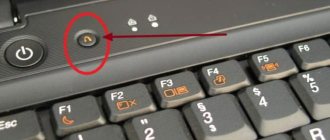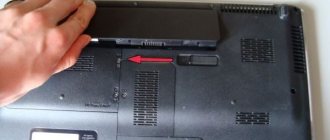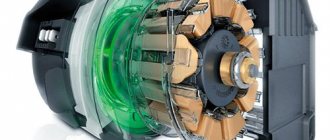Studying, working and traveling at the same time is the life of a modern person. If previously every home had a stationary PC, now laptops have replaced them everywhere due to their compactness. The new format of the personal computer has also changed over time, becoming more productive, lightweight and stylish. With the advent of the MacBook Air model range on the market, a new era began - ultrabooks. What is their difference from laptops and what causes the popularity of mobile laptops?
Advantages of the laptop:
- Large display. This type of device has a diagonal of 15-17 inches, which is convenient for watching videos, as well as working for many hours (including with graphics).
- High processor performance and frequency. With the same hardware parameters, the laptop will be more efficient and will do the job much better than its mobile counterpart.
- Possibility to replace battery and other parts for repair and improvement. If a laptop can be taken taking into account further changes (replace the RAM, battery, video card), then an ultrabook is a complete model.
- There is a separate video card on gaming and graphics models.
- Availability of a disk drive and at least 4 USB ports.
- You can change the amount of data storage.
Dimensions
The most obvious difference between a laptop and an ultrabook is size, which is what really matters here. After all, all models of compact personal computers are called a laptop, and to be called an ultrabook you need to meet standards. To do this, a mobile PC must be no more than 14 inches diagonal, up to 2 cm thick and weigh up to 1.5 kg. Like, for example, ASUS Zenbook 3 - the device weighs less than a kilogram and has a 12.5-inch display. If you compare these dimensions with the dimensions of regular laptops, the difference is noticeable. Carrying a thin and light device in your bag every day is easy.
What is the difference between an ultrabook and a laptop: what is the main difference?
The differences between an ultrabook and a laptop are not only external, but also internal. The most significant ones include the following:
- size, weight;
- hardware “filling”;
- accumulator battery;
- price.
Size
The first thing that catches your eye when comparing two side-by-side devices is their size. With the same screen diagonal, an ultrabook is always much thinner. Accordingly, its weight is several times less. At the same time, in terms of its performance characteristics, it does not lag behind its larger brother. Typically, the thickness of an ultrabook does not exceed 1.5 cm, while the weight is less than 1.5 kg.
In turn, a laptop is almost never thinner than 2.5 cm. The minimum weight of the most compact and ergonomic models is more than 2-2.5 kg. Relatively recently, ultrabooks were equipped with small screens. The diagonal rarely exceeded 14 inches. But nowadays there are models equipped with a screen of 17 inches or more.
Hardware "stuffing"
Special attention should be paid to the material of the case. More than 90% of all laptops are made of ordinary plastic
At the same time, the construction of their thin-bodied relatives uses aluminum and other functional materials.
Regarding the internal filling and performance, everything is not so simple. Due to the specific nature of the ultrabook case, it is simply impossible to install a fully functional cooling system in it. Accordingly, the installation of powerful processors is not carried out. Special chips are used that emit a minimal amount of heat. Certain performance limitations apply. The situation is similar with the video card.
Accumulator battery
The battery installed in ultrabooks is usually less capacious than that of a laptop. But at the same time, the power of consumers is several times lower in an ultrabook. Therefore, relative to this point, a certain parity has been established between the two devices.
Price
Price is the most significant difference between the two devices mentioned above. If you compare it for devices with the same parameters, then it will differ twice. That is why, before choosing an ultrabook, you should make sure that you need to buy it.
Weight
An ultrabook and a laptop are a bird of a feather, only in the first everything is done to minimize excess weight. The hardware of both devices is approximately the same, just made of different materials. For example, hybrid hard drives or SSDs are used as storage devices. Manufacturers simply excluded some elements because they were unnecessary to “lose weight” of the laptop - a disk drive, ports, discrete video adapters. For thinness and mobility, ultrabooks use a special rechargeable battery that is not removable.
What meaning do developers put into the term Ultrabook?
Ultrabook is not a brand or the name of a specific line of laptops. It was originally a trademark of Intel that they used to denote a specific set of features and technical parameters for laptop computers.
This was an attempt to get closer in technical specifications and displace the popular line of ultra-thin MacBook Air laptops.
What parameters should a laptop have in order to be considered an ultrabook?
Most importantly, it must be thin. The definition of thinness is vague, but the device should not be thicker than 2.5 cm.
By this definition, even a MacBook Pro would qualify as an ultrabook, even though it is a full-featured laptop. This is done in order to leave as large a mobile niche as possible for laptops, which is constantly being taken away by tablet computers.
It should also be light. To ensure that the ultrabook's thin body is durable and lightweight, it is often made from aluminum alloys.
Of the technical features, three really stand out ⇒
- Intel Rapid Start
- Intel Smart Response
- Intel Smart Connect.
All of them are developed by Intel, so the Ultrabook will include core Intel technologies. Below we will look at what each of these functions does.
The most notable feature is Intel Rapid Start . This is the mechanism by which a laptop can wake up from sleep or hibernation mode into a fully functional OS in about four to five seconds.
This became possible thanks to new methods of storing the necessary data with minimally low power consumption, which can be quickly restored. This allows the laptop to remain in this state for a very long period of time.
In practical tests, this period was about a month before the laptop required charging. To achieve this, SSD drives were used as the main storage device. They are fast, quiet and consume much less energy than traditional HDDs.
Intel Smart Response Technology is another way to improve the performance of an Ultrabook compared to a standard laptop. In a nutshell, this technology takes frequently accessed files and places them on fast storage media such as a solid state drive.
In modern realities, when in many ultrabooks the main storage is a solid-state drive, this does not provide any particular advantages. Before the proliferation of SSDs, this technology performed well on hybrid hard drives.
The latest major technology is Smart Connect . It was specially designed for the capabilities of tablets. In fact, tablets never turn off, but simply go into sleep mode. In this state, tablets use some functions to update.
While the display and interfaces are turned off and the processor and network are running in low-power mode, the tablet can update email, news feeds and social networks.
Smart Connect technology does the same for Ultrabooks. The downside is that this feature is optional and often not needed. Many ultrabooks will not support this technology.
Hardware
Ultrabooks, although lightweight, can also be productive and powerful. They integrate modern fifth- and even seventh-generation Intel processors, but with restrictions on energy consumption. This allows the device not to overheat during operation. Although models from well-known brands, for example, Mac, Asus or Dell, pack ultrabooks with good processors, their operating frequency is reduced. This means that when testing the speed of a laptop and its thin version, the first will win.
Pros, cons and which is better to choose: laptop or ultrabook
We found out what the differences are between a laptop and an ultrabook - as it turned out, it was not difficult. It is much more difficult to make a choice in favor of a certain type of device if you need to purchase a personal computer.
| Ultrabook | Laptop | |
| pros | The advantages of an ultrabook include the following:
| Regular laptops have the following advantages:
|
| Minuses | There are also quite significant disadvantages:
| Significant disadvantages:
|
| Conclusion | Taking into account all the features listed above, it is worth purchasing equipment of this type for those for whom dimensions and weight play an important role. These are travelers, businessmen, students - everyone who constantly needs a PC. It’s quite difficult to constantly carry 3-4 extra kg with you. An ultrabook is practically weightless compared to a laptop. But it is important to remember that all such computers are equipped with discrete video cards. Their performance is limited. | This technique is perfect for those for whom the overall dimensions of the PC do not matter, but a powerful computing component is important. Even relatively low-cost laptops, for the most part, outperform ultrabooks from the middle price category. Taking into account all the pros and cons of larger portable PCs, we can conclude that purchasing such equipment will be the optimal solution for designers, planners and other persons using professional programs. For example, AutoCAD or Photoshop require a multi-core processor as well as a discrete graphics card. Ultrabooks, for the most part, simply will not allow you to solve problems in these software environments. |
The choice in favor of a specific computer format should be made primarily based on your financial capabilities and the specifics of your work. Laptops and ultrabooks have their advantages, it’s worth familiarizing yourself with them all first. This will allow you to make the best possible purchase.
Battery
If, when choosing a device, an ultrabook or laptop is based on battery life. And they do the right thing, because this is often the reason for buying a thin gadget. The batteries in ultrabooks are made using special technology, which makes them flexible. Therefore, they do not take up much space and do not weigh much. The operating time for such a device is longer than for laptops. For example, at the same cost, a thin personal computer will work autonomously for 5 hours, and its analogue with a diagonal of 15-17 inches will only work for 3 hours.
Price
The pricing policy for both versions of equipment depends on the technical parameters: the more powerful and modern, the more expensive. With the same characteristics and manufacturers, an ultrabook will cost less. When purchasing, you also need to take into account possible expenses for improving the device (improving OP, memory capacity, adapters for ports, and so on). Also, ultrabook owners need to invest in a hard drive to store heavy files without cluttering up their personal PC.
Which is better, laptop and ultrabook?
It is quite difficult to determine the best gadget, because it all depends on the technical requirements. If you need a portable gadget for work, study, that is, for standard workloads (reading, watching videos, typing and working with installed programs), then an ultra-thin laptop will do (a fairly budget HP Notebook laptop - thin, light and ideal for a student - bright example). But for gamers, designers, programmers and those who squeeze performance out of their PC, the full arsenal of this device will not be enough. It is much easier for them to spend money on a good personal computer with a large diagonal, which can also be carried with them on occasion.
If you wish, you can upgrade any equipment, but this requires time, money and knowledge. Not all models can be disassembled and some elements can be changed. Therefore, buying an ultrabook because of the cost with the hope of further transformation is a risky proposition. Then it’s better to take a low-power laptop and make the update much easier with it. New models of both devices are designed to be as productive as possible; manufacturers are trying to make the body thinner and the weight less.
Faster, smaller, more powerful. What is an ultrabook and how does it differ from a laptop?
Photo: Acer press service The market for computer equipment and new technologies has long been moving towards increasing the power of devices and improving their ergonomics. Laptops of the latest generations are becoming smaller and lighter, but do not lose high performance and speed.
About ten years ago, Intel introduced the concept of “ultrabook” - thus, they began to distinguish between portable models and standard laptops. Ultrabooks are distinguished by their stylish design, light weight and thickness, and increased operating time without recharging—they are convenient to take with you on trips.
Time passed, technology moved forward, and new ultrabooks from various manufacturers with identical hardware appeared on the market. The general trend of reducing body size was gaining momentum, but at the same time the performance of the equipment suffered. Budget ultrabooks with plastic casings have appeared. The original meaning of the term “ultrabook” began to blur, and it became difficult for users to navigate the endless variety of products.
In 2021, Intel created Project Athena, a long-term innovation program to develop advanced laptops and mobile devices. In addition to Intel, the Athena group of companies includes leading players in the digital market: Microsoft, HP, Dell, Google, Lenovo, Samsung, Xiaomi - about 100 participants in total. The project was created to essentially redefine a standardized set of specifications. A laptop that wants to become an ultrabook must comply with them. Specifications describe performance, connection interfaces, battery life. The technical characteristics were set quite clearly: exiting the sleep state - no more than 1 second, video playback time - no less than 9 hours, fast charging time - no more than 30 minutes.
Last year, Intel updated the standardization, and by the end of 2020, Intel Evo certification appeared. In fact, the second edition of the Athena project pays more attention to the interaction between local and cloud services, which perfectly reflects the trends of the modern work environment.
The proprietary Intel Evo sticker on the ultrabook case guarantees the presence of an 11th generation Intel Core i7 or i5 processor with Intel Iris Xe graphics, an advanced wired Thunderbolt 4 connection that provides high data transfer speeds, and almost three times increased Internet speed due to built-in Intel Wi technology -Fi 6, as well as outstanding sound and video quality with more than 8 GB of dual-channel memory, as well as a minimum of 256 GB of NVMe SSD.
In addition, an ultrabook with the Evo logo must have a high-quality and calibrated display with a touchscreen and thin frames, a precision touchpad and a decent audio subsystem. Mobile systems should not only be thin and sleek, but also lightweight and have a quiet cooling system.
Essentially, Intel is introducing clear points for adding ultrabooks to a kind of Michelin list. Only, in contrast to the secret criteria of the famous Red Guide, in this case there is a very specific and significant list of requirements for equipment. With the introduction of Intel Evo certification, they began to pay even more attention to testing: before assigning the coveted sticker to a model, it is run through more than 25 real-life operating scenarios.
Given the seriousness of the requirements, there are very few Intel Evo-certified devices on the market so far. But this short list definitely includes a new product from Acer - an ultrabook created in collaboration with the Porsche Design design bureau.
The Porsche Design Acer Book RS ultrabook can easily be classified as a premium class. The released device combines the technological experience of the Taiwanese company Acer, which has been specializing in creating innovative products for more than 40 years, and the exclusive design experience of the German brand Porsche Design.
The appearance of the new ultrabook from Acer Book RS follows the Porsche Design philosophy, aimed at optimizing all product functions. The 3K carbon fiber cover stands out against the device's diamond-cut body. The ultrabook weighs only 1.2 kg and is 15.99 mm thick. The two parts of its body are connected by a one-piece hinge, which raises the keyboard slightly when opening the laptop to improve cooling of components and make typing as comfortable as possible.
But the most important thing, of course, is contained under the carbon “hood”. Porsche Design Acer Book RS is equipped with the latest 11th generation Intel Core i7 processor, NVIDIA GeForce MX350 graphics card, 16 GB RAM and a 14-inch FHD IPS touchscreen covered with Antimicrobial Corning Gorilla Glass. Thanks to ultra-thin bezels around the screen, engineers were able to achieve an impressive display-to-body ratio of 90%. Two copper heat pipes ensure efficient cooling of components, and the battery life of 17 hours can easily be extended by connecting the device to the network for just half an hour. Users of the new product also have access to high-speed wireless communication with a dual-band Intel Wi-Fi 6 adapter and “smart” functions, including quick account login using a fingerprint sensor with support for Windows Hello, Modern Standby mode when the processor does not turn off, and Wake on technology Voice, which allows you to wake the device from sleep using a voice command.
Photo: Acer press service
The collaboration between Porsche Design and Acer is not the first time for laptop manufacturers to create a car-computer hybrid. However, before technology was still at a different level: previous creations lagged far behind top-end laptop models in terms of convenience and functionality, being interesting only from a design point of view. In 2004, cooperation between Acer and Ferrari began, jointly producing laptops, monitors and smartphones. The body of the Acer Ferrari One laptop created as part of the collaboration was distinguished by the spectacular signature red color of the Ferrari company, and the legs were made in the form of small gear wheels imitating car wheels. However, the thickness of the device (from 24 to 30 mm) made it visually bulky. Asus and Lamborghini began creating laptops with their signature luxurious and noble design in 2006. However, these almost four-kilogram beauties were more suitable for home use.
Perhaps the Porsche Design Acer Book RS is the first model on the market that evokes associations with a premium brand car not only because of its appearance, but also because of its functionality. After all, a sports car is primarily about mobility and speed. This is exactly what buyers expect from top-end ultrabook models with the logo of a famous car brand on the lid.
Until April 10, using promo code SNOB you can get a 10% discount on a Porsche Design Acer Book RS laptop when purchasing at ru-store.acer.com


